The Best Sewing Supplies for Beginners
This post may contain affiliate links which won’t change your price but will share a commission.
INSIDE: The Best Sewing Supplies for Beginners
I learned to sew when I was 12 years old. My journey began Christmas morning, 1970, when I received a humble Singer sewing machine alongside a wicker sewing basket filled with a pair of Gingher scissors, a seam ripper, needles, a yellow tape measure, and a few other notions. I was fortunate because my mother and grandmothers were all seasoned sewists thrilled to help me get started on my sewing adventure.
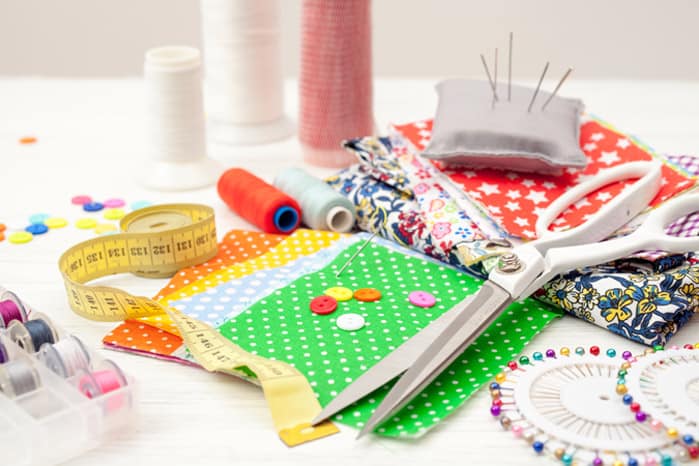
Not everyone comes from a sewing family and choosing sewing supplies can be as daunting as sewing itself.
Do you know how much you should spend on supplies? What supplies are best for a beginner? Are there particular brands you should buy? If you’re wanting to learn to sew but have no idea what supplies you need to get started, then look no further. I’ve put together a few must-have sewing supplies for beginners.
1. Sewing Machine
The first thing you will need to have if you’re learning to sew is an entry level sewing machine. Before purchasing any sewing machine, I suggest you read my post Tips for Buying a Sewing Machine.
Below are a few beginner machines that consistently get good reviews. You can see more of my favorite machines at this link.
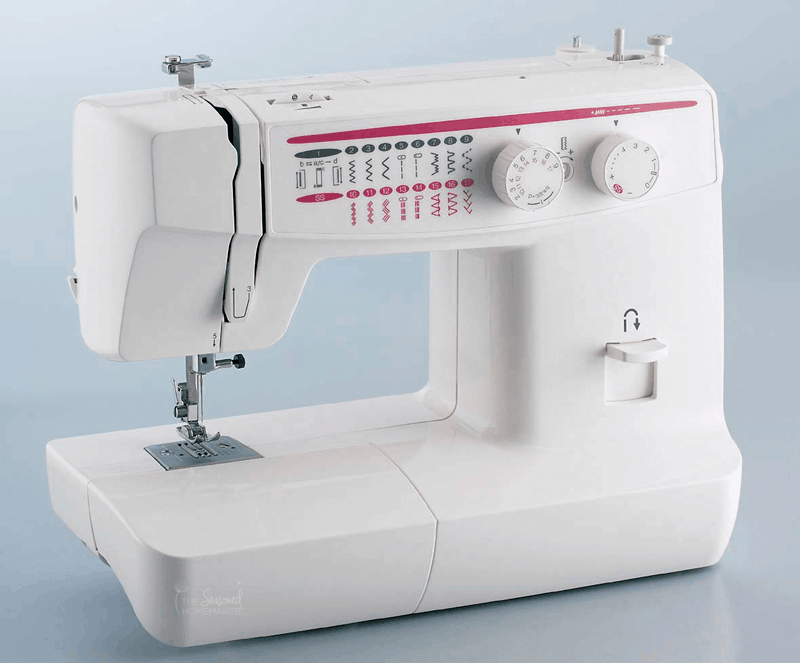
>>>Brother CS6000i
>>>EverSewn 20-80
>>>EverSewn 25 with Sew Steady Table
2. Fabric Scissors
You will need a good pair of scissors that are dedicated to cutting fabric only. These must be kept separate from all other scissors because they will quickly become dull if they are used to cut paper. As a sewing beginner, you may want to keep a plastic storage box with your sewing supplies hidden away from family members who will snatch those scissors and use them to cut everything in site.

>>>Ginger 8″ Shears
>>>Havel’s 8-Inch Scissors
>>>Fiskar 8-Inch Scissors
>>>Fiskar 8-Inch Orange Handle Scissors
3. Seam Ripper
All sewists know that your best sewing tool is a good seam ripper. I have more than one and prefer the more ergonomic seam rippers. An inexpensive one will serve you well, but I recommend having a backup in case you misplace it.
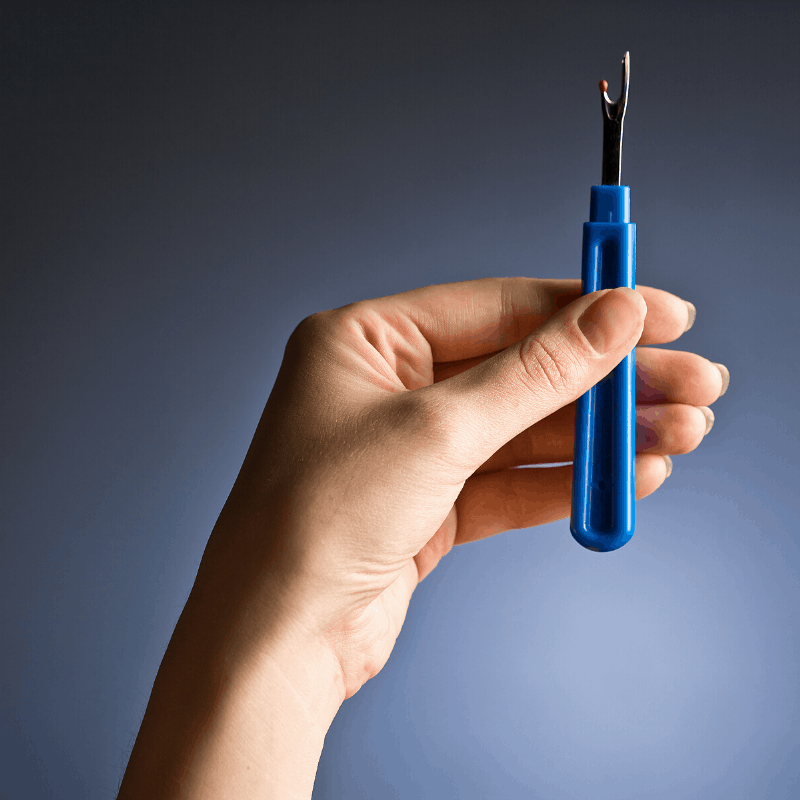
>>>Simple Seam Ripper
>>>Large Seam Ripper
>>>Seam Ripper Pair
>>>Clover Seam Ripper
4. Small Scissors for Snipping Threads
When you’re sitting at your sewing machine working on a project you will need to have a small pair of scissors for snipping threads, clipping corners, and other small sewing tasks.
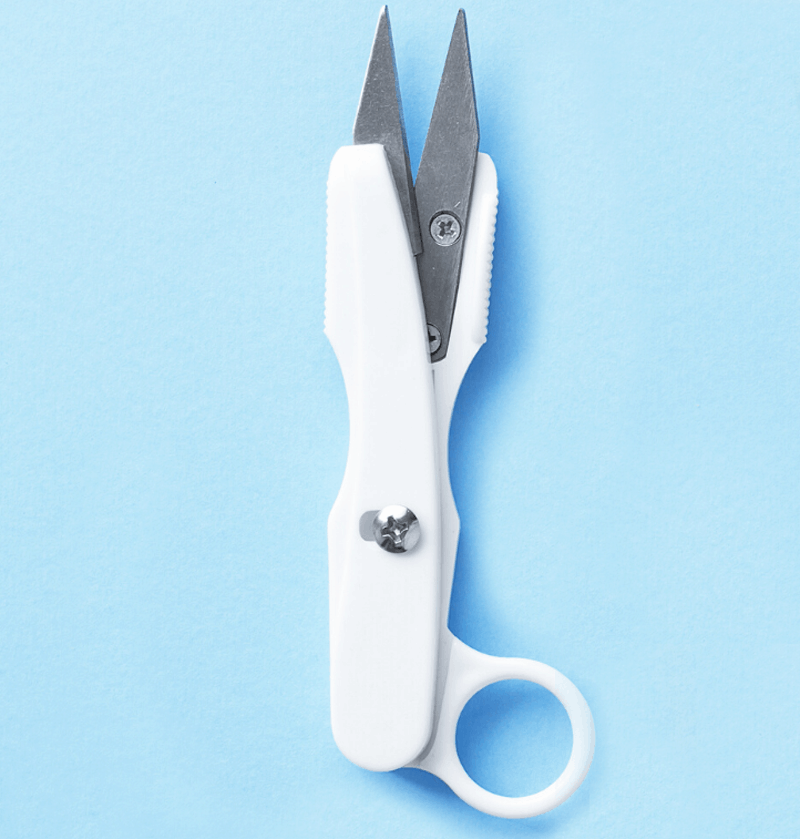
>>>Fiskar Ultra-Sharp Snips
>>>Fiskar Thread Snips
>>>Havel’s Snip-Eze
>>>Fiskar Soft Grip Scissors
5. Measuring Tape
When sewing garments or small projects you will need to take accurate measurements. A measuring tape is ideal. Because they are so inexpensive, I recommend having a regular measuring tape and a retractable measuring tape.
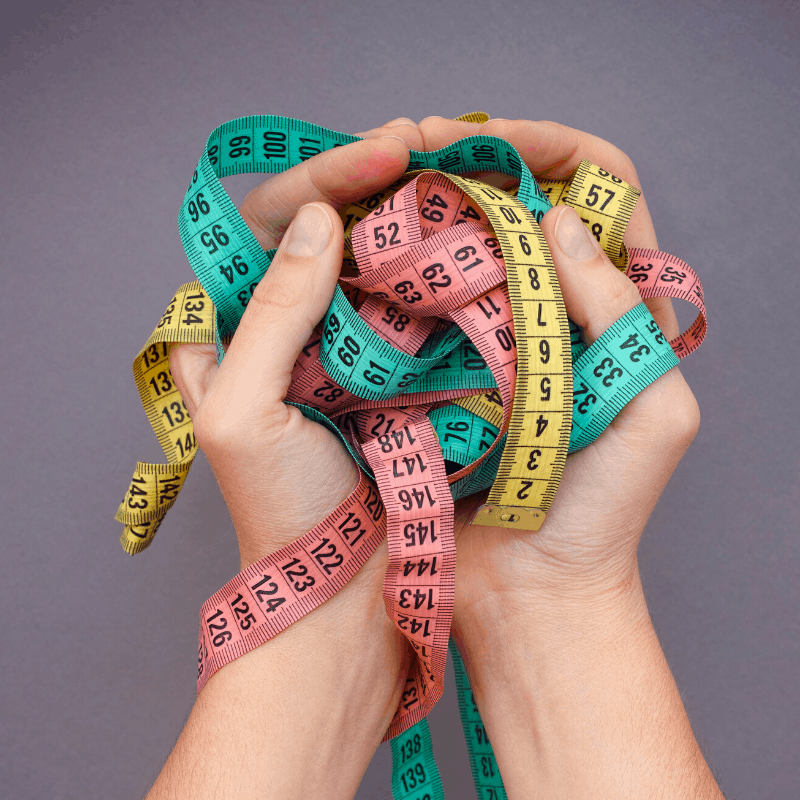
>>>Singer 96-Inch Extra Long Tape Measure
>>>Clover Tape Measure
>>>3 Pack of Retractable Tape Measures
6. Steam Iron
You will need an iron and ironing board handy when sewing. Most inexpensive steam irons will work if you keep them clean and in good working order. I recommend looking for an iron with an automatic shut-off and some sort of non-drip feature. Sewing takes its toll on irons, so I recommend getting the best one you can afford.
Be sure to read this review about my favorite iron!*
>>>Sunbeam Classic 1200 Watt Iron
>>>Budget Rowenta Steam Iron
>>>Rowenta Steam Iron
>>>Reliable Velocity 230*
7. Ironing Board
A sturdy ironing board is also a must for sewing. It needs to be steady with T-shaped legs and non-slip feet. I recommend looking for one made from a perforated material for steaming fabrics. It also needs to have an adjustable height feature that locks in place.
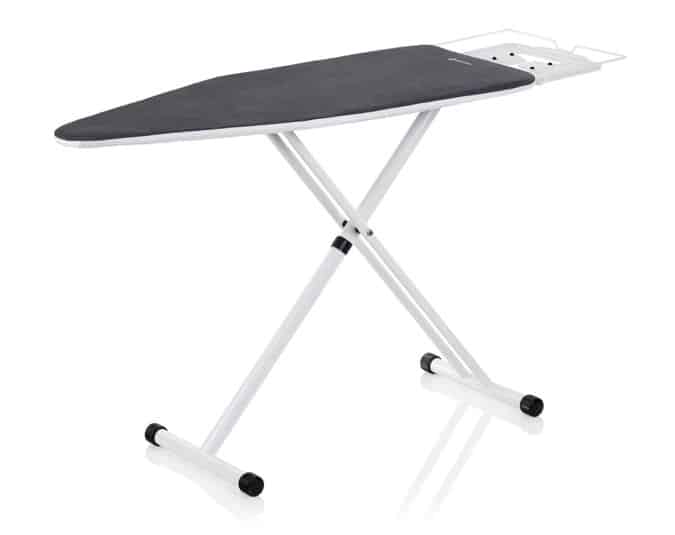
Read about my favorite ironing board here.*
>>>Home 4-Leg Ironing Board
>>>Sunbeam Ironing Board
>>>Reliable Ironing Board*
>>>Reliable Heavy Duty Ironing Board*
8. Sewing Machine Needles
I only recommend Schmetz sewing machine needles. They are high-quality needles and have a great color-coded system for helping you remember which needle is in the machine. For most sewing you will need a universal 80/12 needle.
However, when sewing with knits you will need a ball point needle.
Heavy fabrics will require a jeans needle and quilting is best done with a topstitching needle.

>>>Schmetz Universal 80/20 Needles
>>>Schmetz Stretch Needles
>>>Schmetz Heavy Duty Jeans Needles
9. Straight Pins

Straight pins are needed for pinning your projects together prior to sewing. You will need pins for sewing with woven fabrics and pins for sewing with knits.
To understand more about pins, read this post.
>>>Dritz Dressmaker Pins
>>>Dritz Glass Head Pins
>>>Dritz Extra Long Pins
>>>Clover Flat Head Pins
10. Pin Cushion
If you have pins you will need a pin cushion. Keeping them in the plastic box they came in is a recipe for disaster. A pin cushion keeps your pins from scattering if you accidentally knock them over. I prefer magnetic pin cushions, but the old-fashioned tomato pin cushion will get the job done.

>>>Make Your Own Pin Cushion
>>>Make Your Own Pin Cushion 2
>>>Classic Tomato Pin Cushion
>>>Magnetic Pin Cushion
>>>Magnetic Wrist Pin Cushion
11. Thread
There are so many variations to thread, however, a sewing beginner really needs a small collection of general purpose threads. Gutermann or Coats & Clark threads will work perfectly for most of your sewing projects.

>>>All-purpose Thread
>>>Cotton/Poly Thread
>>>Cotton Quilting Thread
12. Fabric Marking Pen or Chalk
Occasionally you will need to make a mark on your fabric to show where darts or other features will be placed. There are a few options which will depend on the fabric and type of project you’re sewing. Water soluble markers are very good for marking things like buttons and buttonholes. Tailor’s chalk is very cost effective and comes in several colors. Tracing paper is also a good way to mark fabric.
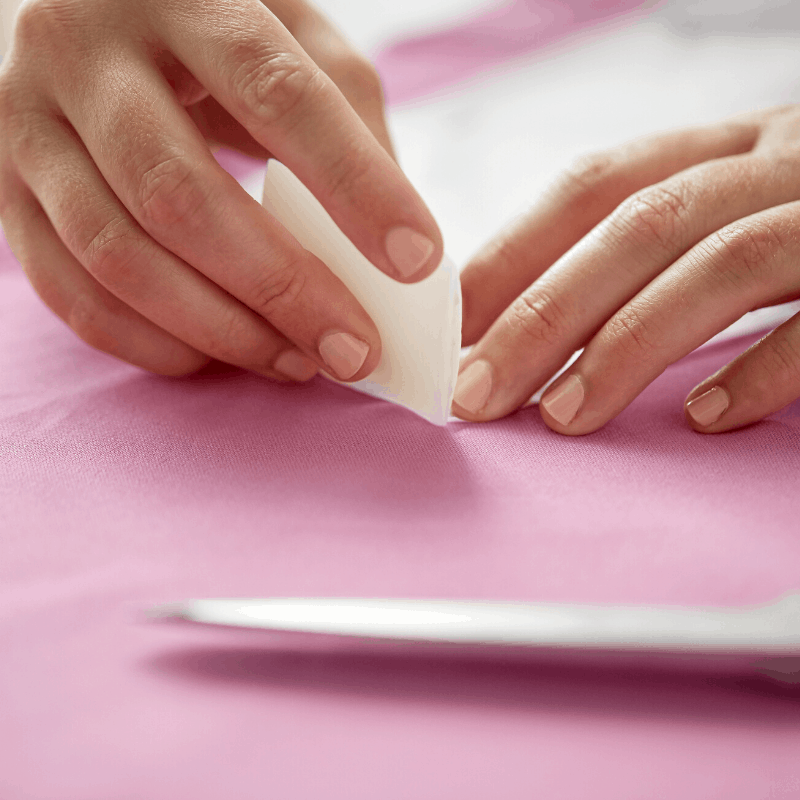
>>>Water Soluble Pen
>>>Water Soluble Pencils
>>>Water-Erasable Roller Ball Pen
>>>Air-Erasable Roller Ball Pen
>>>Tracing Paper
>>>Tracing Chalk
13. Tracing Wheel
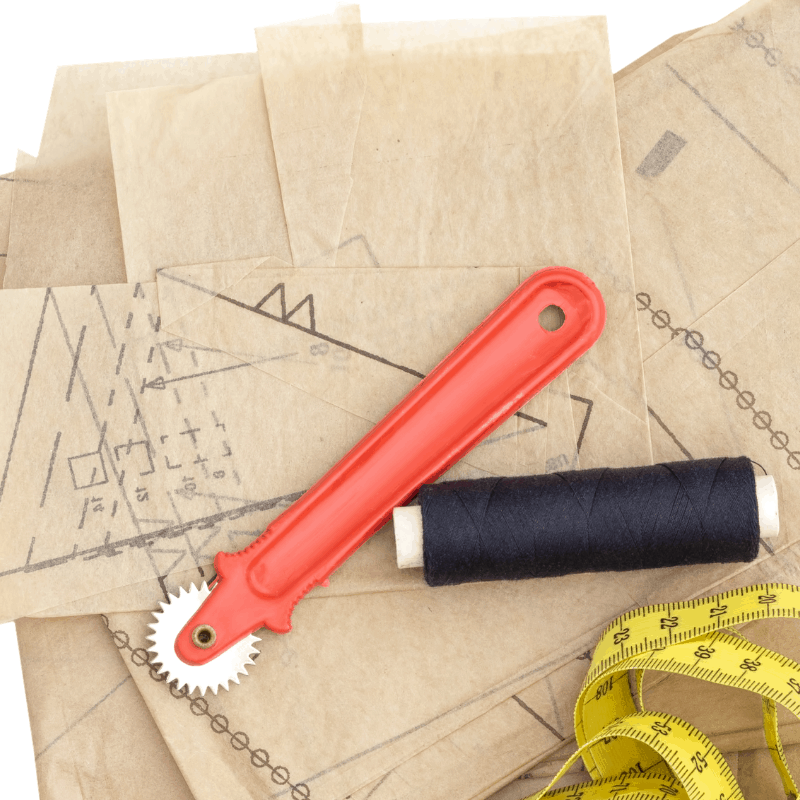
If you are using tracing paper then you will need some sort of tracing wheel to get the pattern markings onto your fabric.
>>>Wooden Handle Tracing Wheel
>>>Serrated Tracing Wheel
>>>Smooth + Serrated Tracing Wheels
14. Rotary Cutter
A rotary cutter, self-healing mat, and ruler are essential for cutting out many of your projects. It speeds up the process and allows you to get accurate cuts. I recommend getting a rotary cutter that is sized for a 45mm blade.
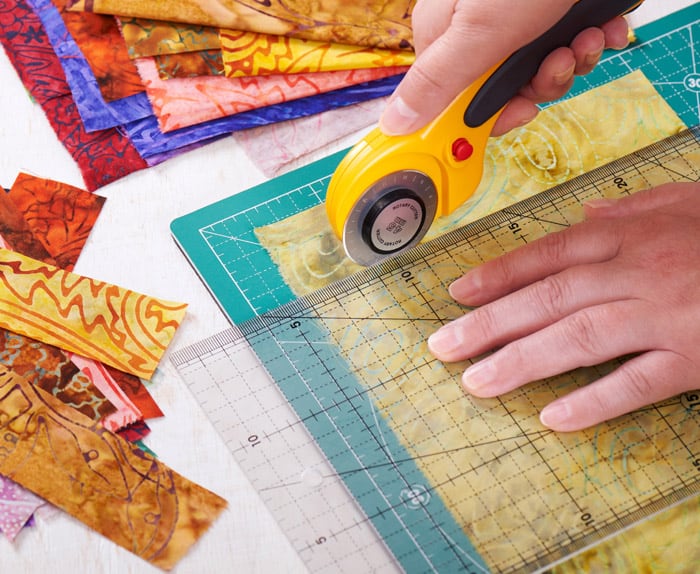
Click here for thorough information on rotary cutting.
>>>45 mm Rotary Cutter
>>>60 mm Rotary Cutter
>>>28 mm Rotary Cutter
15. Self-Healing Cutting Mat
The size of your cutting mat will depend upon your available space. One thing to remember is always store your mat flat and never place anything on top of it.
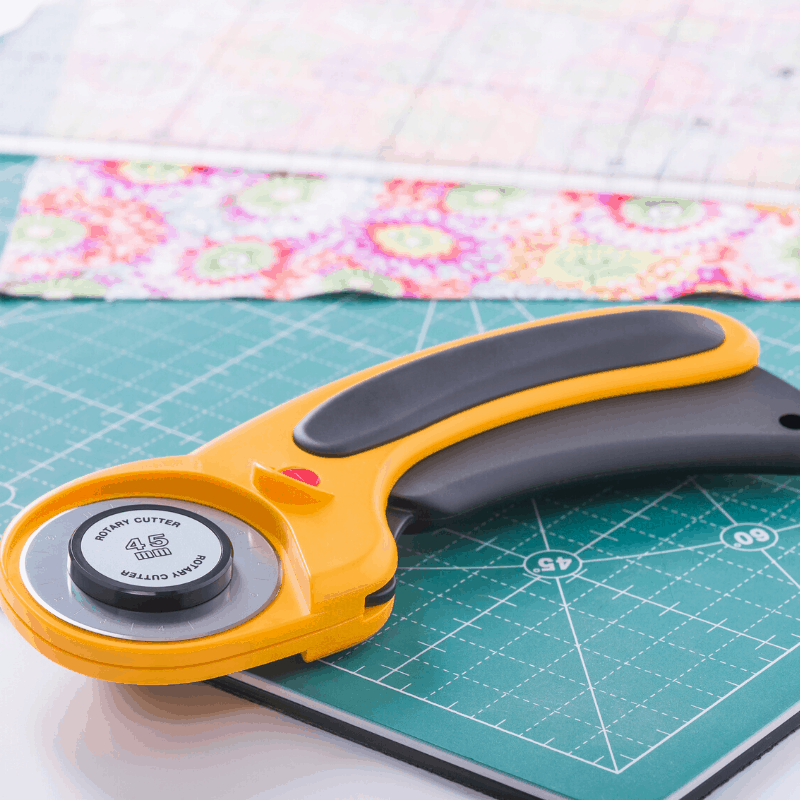
>>>12″ x 18″ Double-Sided Mat
>>>24″ x 36″ Double-Sided Mat
>>>Rotating Mat
16. Rulers for Rotary Cutting
Eventually, you will need more than one ruler for rotary cutting, but these are a good place to start.
>>>6.5″ x 24.5″ Creative Grids Ruler
>>>4″ x 14″ Creative Grids Ruler
17. Sewing Books
It’s always nice to have a book to refer back to when learning to sew. I recommend these books for anyone starting out.

>>>Click here to see my favorite sewing books
When I think back to that first sewing machine I still wonder what my parent’s had to sacrifice in order to make such an extravagant purchase. My dad, who never forgets a number, said it cost $99 plus tax. I’m guessing there was a lot of overtime involved.



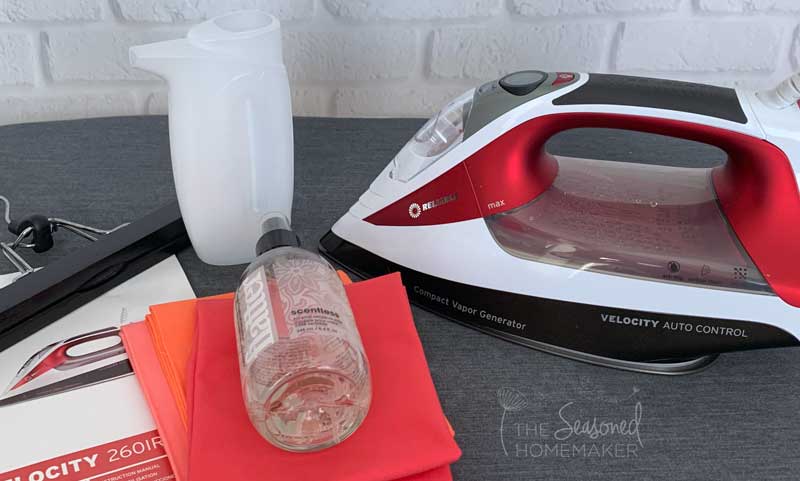
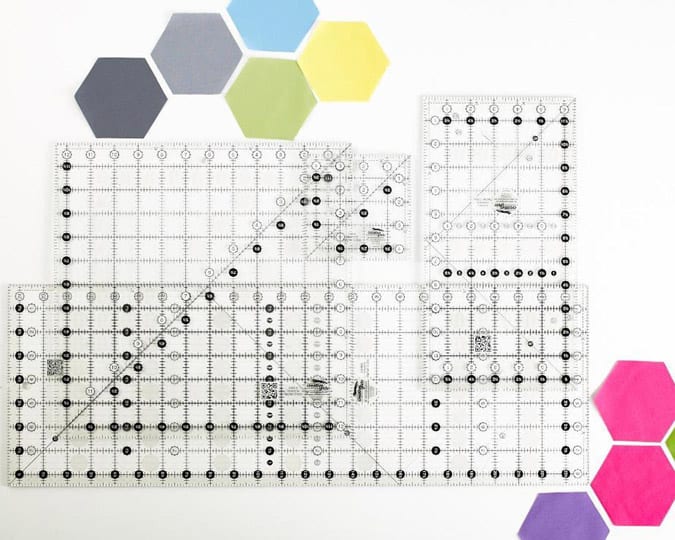

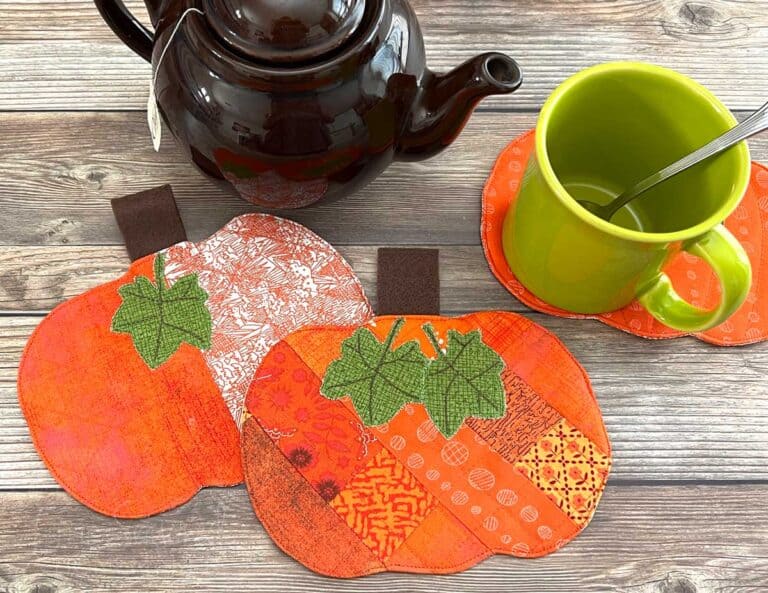
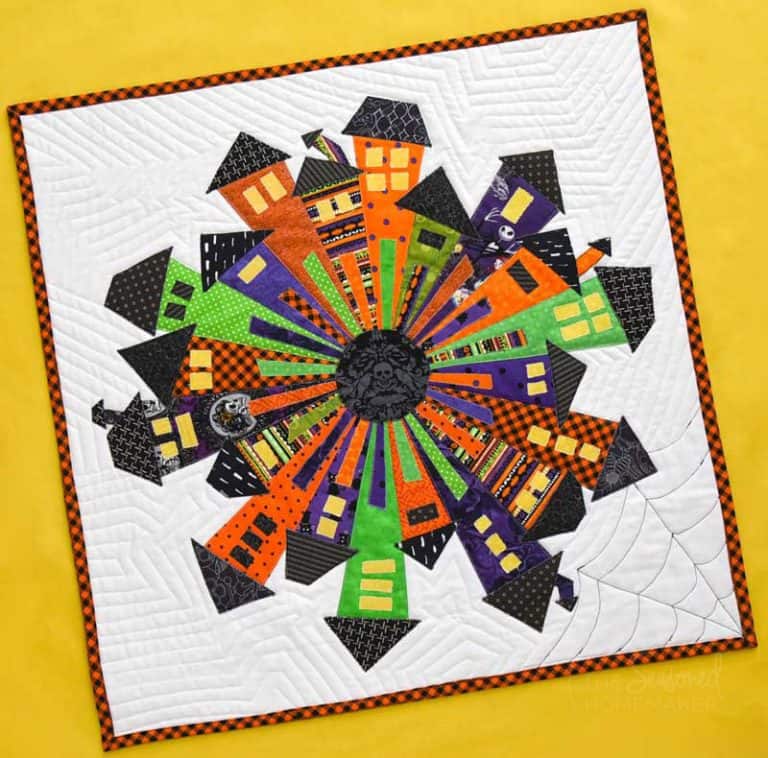
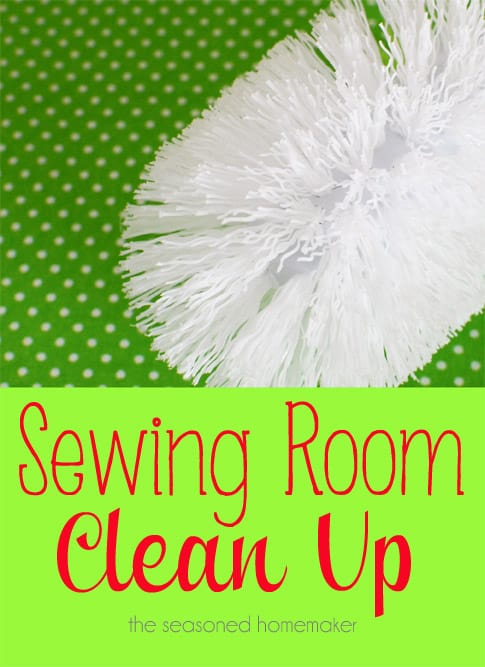
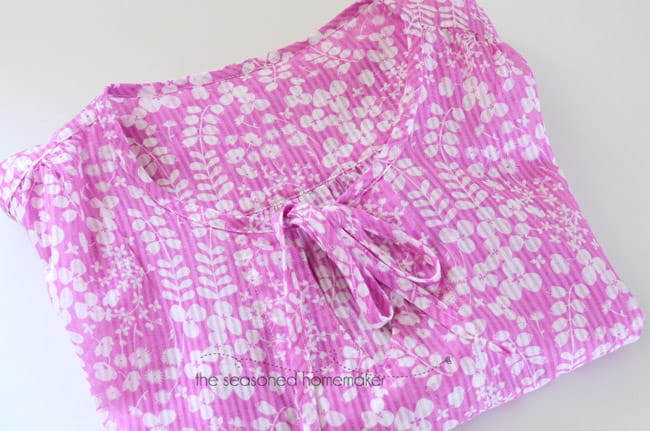
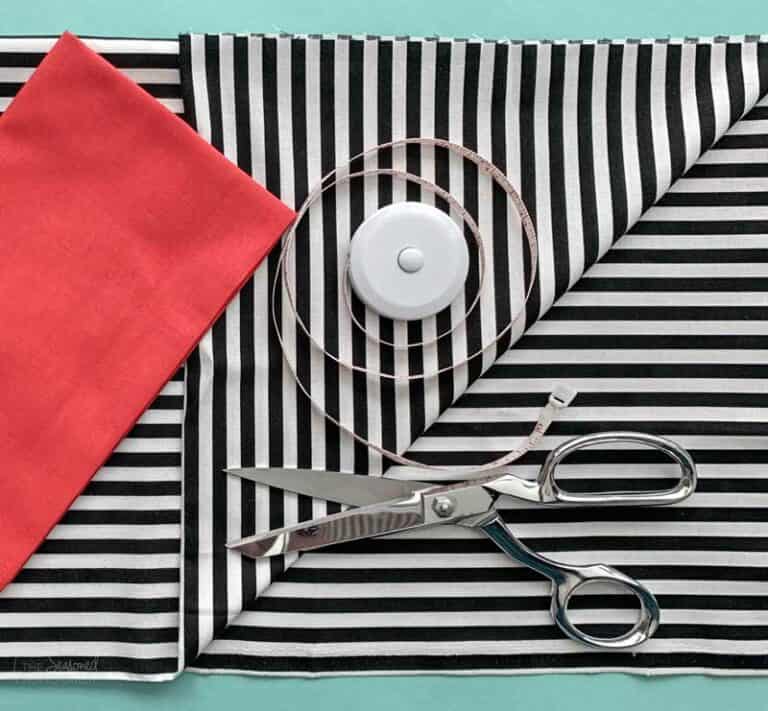
Love the post and glad to see I have purchased the best supplies for beginning sewing
great reference for someone wanting to learn to sew.
I smile thinking of your $99 sewing machine. I have been sewing since I was 10. My parents are from New England and never bought anything new, always used. Did not sew on a new machine until I was about 32.
Read your story about starting to sew, think I started about same age. Didn’t have my own machine, used an older Singer my Mom had for years. I too come from a family of sewists and am so glad I did. One of my Aunts was so good she worked for Halle Bros..in downtown /Cleveland, OH. for many years doing alterations for wealthy ladies and whatever else needed.
Besides my Mom teaching me my Aunt did also. One thing she taught me was “you can sew or you can do house work, decide which it will be on that day”. Can remember so clearly her coming over to show me some sewing tricks one day when I was young woman with 3 small kids.
I love to sew and am ashamed to admit have never made a quilt, some thing else family did. Just never took time to attempt. Not like I don’t have time now, am 77 and we stay home a lot. Love to watch your videos, the trick for laying out to pin quilt with 1×3 boards is so clever and makes the task so much easier.
Your site and all the work you go to to provide such helpful information is invaluable for new sewists especially. Doesn’t hurt for older sewists to refresh their techniques either. Thank you so much for sharing all you do.
Just wanted to let you know how much I appreciate your blog.
Happy week
I learnt to sew about age 6. All you really need to start is some hand sewing needles, some fabric and thread and something to cut them with. It really does not need to be anything expensive. Make a pin cushion (two squares of fabric filled with filling from an old pillow), use a school ruler for measuring and a pencil for marking. See if you like it – then buy an old straight stitch machine, see how it works and what a lock stitch is and how it is formed and learn about sewing machine tension. Then buy a basic machine but ensure it has both stitch width and stitch length adjustment – some of the really basic ones do not. Buy a good book on basic sewing that you will not mind making notes on from articles you read on the web and take it from there.
My little sister is getting a sewing machine from our mom for her birthday so I thought I would get her some useful supplies to go with it. So thanks for letting me know that I should not only get her a seam ripper, but I should be sure to get her a backup as well. I’ll be sure to include two seam rippers in her basket of sewing machine supplies since it is one of the best tools to use.
Leslie I read your list of what’s needed to begin sewing. I did not come from a sewing family. I had always wanted to learn to sew. I purchased the Brother machine you mentioned in your story and I can vouch for it. They have a wonderful video if you have any problems. I love mine. I purchased it when I retired 4 years ago. I still do not do any major sewing but love to make small gifts and bags. It’s such a pleasure to make something and personalize it. I so enjoy your site and all your information. Thank you for sharing
Great site! I’m a beginner and it almost took all morning for me to find a site to answer simple question, e.g. I was trying to thread my sewing machine needle and the thread didn’t fit through the hole. I have my mother-in-law’s spools of thread (I don’t know how old they are) so as I was researching from the users guide, I thought I would look online. Fortunately your site came up . . its the best – clear and well written . . . so I will buy new supplies based on your guide instead before going back to the machine since it took quite some time for me to figure out how to get thread on the bobbin from the spool, that wouldn’t fit in the needle 🙂
I was fortunate that my mother got me sewing lessons when I was a little girl. I now love to sew (even if it is frustrating at times). Great article – love your website too